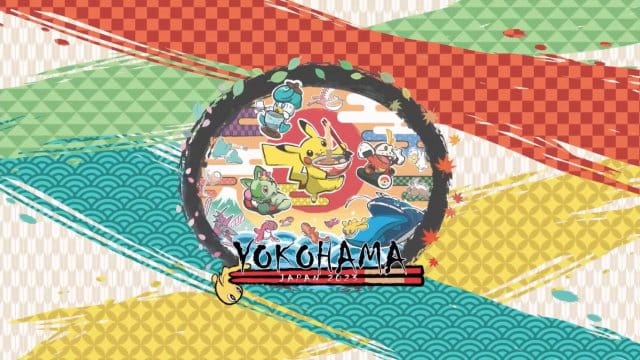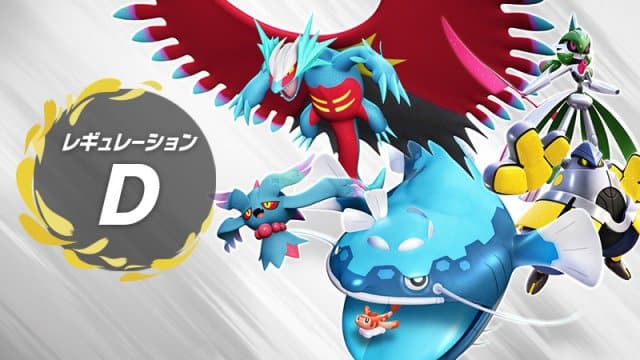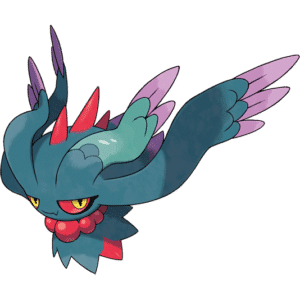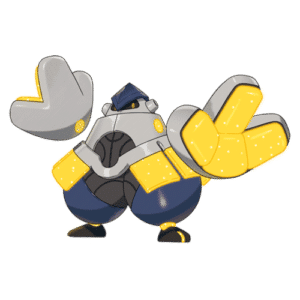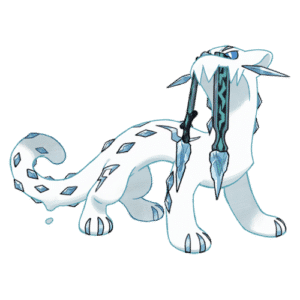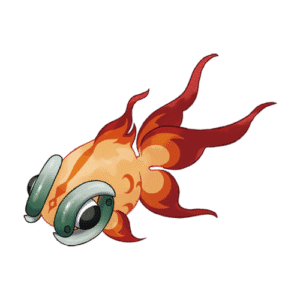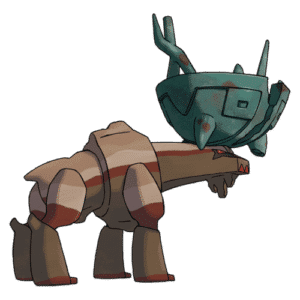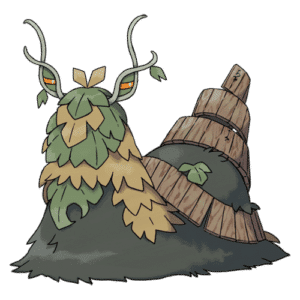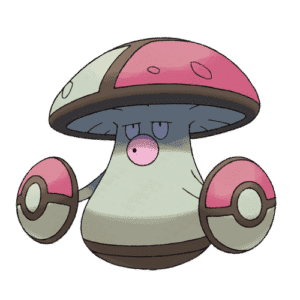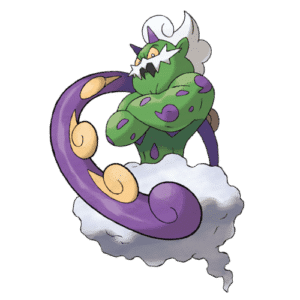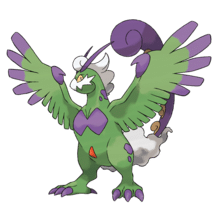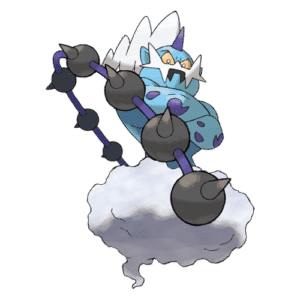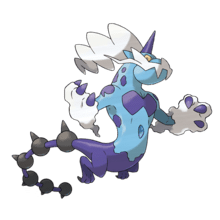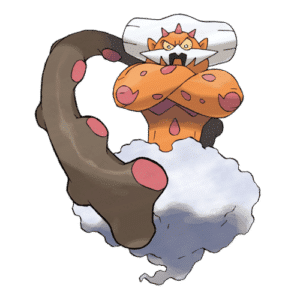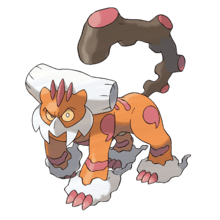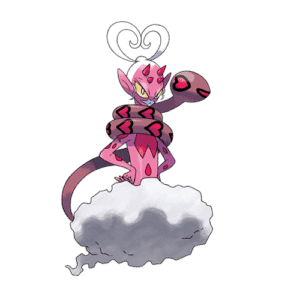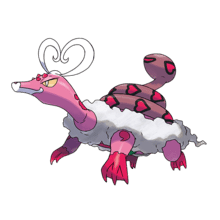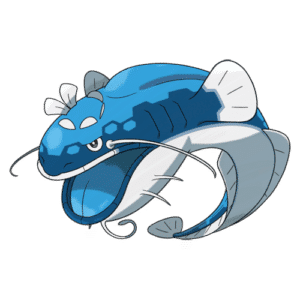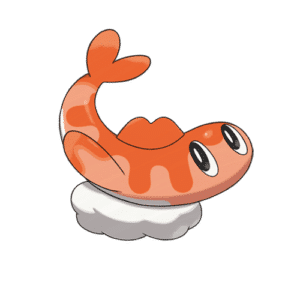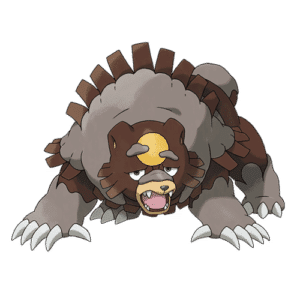With the Pokémon World Championships right around the corner, there’s plenty of hype from the entire Pokémon community to go around! While I’m sure many of you will be tuning in to the Pokémon GO portion of the competition (keep an eye out for GOHub’s very own Avrip in the tournament!), it’s only one of the four different competitions being hosted that weekend. I thought I would spend some time going over the VGC tournament that will be taking place. This year looks to be a particularly exciting one!
The VGC tournament can be watched live from the official Pokémon Twitch channel, which can be found here.
VGC may seem daunting from the outside, as there are a lot of components that go into a seemingly simple Pokémon Battle. This article will have a lot of information that might be a bit overwhelming. I encourage those of you who are planning on more casually watching the VGC tournament to skim this article for general information, particularly the “Pokémon to Look Out For” section. For those of you that want more in depth information past this article, I would encourage you to check out some of the amazing VGC content creators online. Regardless of your approach, this year’s VGC World Championships are definitely going to be a blast to watch. Without further ado, let’s dive in!
What is Pokémon VGC?
The Pokémon Video Game Championship, or VGC for short, is a year long competition which culminates at the World Championships. Trainers assemble a team of 6 Pokémon and compete in Double Battles, where each Trainer selects 4 out of their 6 Pokémon. The matches are best of 3, allowing for Trainers to switch up their strategy between rounds and show off more of their Pokémon.
Teambuilding is easily the most time consuming part of a Trainer’s preparation for Worlds. While selecting the 6 Pokémon to bring to the tournament takes a up a lot of the time, it is only the first of many steps. Selecting the Pokémon’s moveset, ability, held item, nature, IV and EV spreads, and sometimes even gender, are all factors that must be carefully considered before a Trainer can even begin practicing.
In order to qualify for Worlds, a Trainer must earn Championship Points by competing and placing at various tournaments throughout the year leading up to Worlds. Each of these tournaments can have hundreds of participants, each vying for their spot at the World Championship. In addition to Championship Points, top performing trainers can earn prizes including cash, travel vouchers, and more. There’s plenty at stake throughout the season, but a spot at Worlds is undoubtedly the most sought after prize.
Terastalization
Scarlet and Violet’s “gimmick” feature is Terastalization. This allows Trainers to change the typing of one of their Pokémon once per battle. This has unlocked a whole new dimension to Pokémon battles. Terastalized Pokémon will receive the same-type attack bonus (STAB) for their chosen Tera Type in addition to their existing type(s). STAB boosts the power of a move by 50%. If their Tera Type matches one of their existing types, their STAB bonus will be increased to 100%.
In addition to the offensive bonuses, Pokémon can take advantage of the defensive benefits to changing their types. Certain types are immune to other types of moves, such as Ground being immune to Electric, Fairy being immune to Dragon, etc. Additionally, certain types gain additional benefits, such as Fire types being immune to burns, Rock types being immune to Sandstorm damage, and more.
Another thing to note is the move Tera Blast. While it may seem like an unassuming Normal move, Tera Blast has the secondary effect of changing to match the Tera Type of the Pokémon upon Terastalizing. Additionally, it will shift to be a physical or special move, depending on which stat is higher on the corresponding Pokémon. This allows for STAB coverage for any type a Pokémon can Terastalize into, even if they normally can’t learn a move of that type.
As we can see just from these few examples, Terastalization has unlocked endless new strategies for Trainers to utilize, which is just one of the factors that will make the World Championships so interesting.
VGC Worlds 2023 Format
Every VGC competition has a format, or set of rules, that each Trainer’s team must fit in order to compete. There are certain rules that are standard between VGC formats, such as each of a Trainer’s Pokémon being set to level 50. However, some rules change between formats. There are a few that make the 2023 format unique.
First, this year’s format will feature open team sheets. What this means is that Trainers will exchange a detailed list of their team with their opponent prior to the match. This list will include all 6 of each Trainer’s Pokémon, their movesets, abilities, held items, and most importantly, their Tera Types. The only thing left off the team sheets will be IV’s, EV’s, and natures, placing an even heavier emphasis on those aspects of team building.
The open team sheet format is being utilized largely due to Terastalization. This is just one of many measures that ensures that the tournament favors skill over luck. A timely, completely unorthodox Terastalization could totally flip a game on its head, but that doesn’t necessarily mean that the Trainer in question outplayed their opponent. This effort to keep competition skill based is the reason why things such as evasion boosting are banned. In reality, Trainers competing at the top level will be familiar with the most common Pokémon abilities and items anyway, so open team sheets shouldn’t affect things too much, especially since everyone is focused on this next aspect of the format.
As mentioned previously, the road to Worlds is a year long process. Each of the tournaments leading up to Worlds follow a format as well. While formats can change throughout the year, this isn’t a huge deal, as the meta is constantly shifting anyway. Usually, the format in the months leading up to Worlds does not change. However, that is not the case this year.
At the beginning of April, the official VGC format was called Regulation C. This format allows for the use of any of the Pokémon in the Scarlet/Violet Pokédex (excluding Koraidon and Miraidon). This includes the Paradox Pokémon, a powerful new sub-class of Pokémon which we will touch on later, as well as the four sub-legendary Pokémon of the Paldea region, known as the Treasures of Ruin. This was a well rounded format, as the Paradox and Ruination Pokémon were powerful, but meshed well with the existing standard Pokémon.
When Scarlet and Violet received Pokémon HOME support, it introduced a lot of new Pokémon into the picture, including some Legends Arceus exclusives that had never seen competitive play, as well as some competitive legal legendaries such as the Forces of Nature, Heatran, and Cresselia. While these were interesting additions, the VGC community didn’t think much of this update. Surely The Pokémon Company wouldn’t change up the format right before Worlds, right?
To the shock of everyone, it was announced that, barring some of the newly transferrable box art legendaries such as Dialga, Palkia, etc., all of the Pokémon introduced through Pokémon HOME would be legal in the newest format, Regulation D. On top of this, the World Championships would feature this new format. This was significant because there would be no major tournaments featuring Regulation D prior to the World Championships. This means that even the most experienced competitors would be entering into the World Championships with ZERO experience in the format. Over 100 Pokémon would suddenly become legal, and some of them have never been available for any VGC tournament before.
TLDR: The official VGC format, or ruleset, changed right before the World Championships, meaning players are entering into a brand new format that has never been featured in a tournament before. Additionally, this format introduces over 100 new Pokémon into the meta. We’re sure to see some never-before-seen strategies, and it will take a new level of skill for the next Pokémon VGC World Champion to emerge.
Pokémon to Look Out For at Worlds
Phew. That was an admittedly long winded explanation of the rules. I’m sure many of you probably don’t care too much about any of that. Now I’ll quickly touch upon some Pokémon that we’re sure to see throughout the weekend. Many of these have been consistent meta threats throughout the season and are sure to see some play, while others are newly introduced thanks to the HOME update, but have proven their worth through testing alone.
Some of these Pokémon have not yet been introduced to Pokémon GO, so hopefully this list will help those of you who might be unfamiliar with the main series games to follow some of the VGC competition throughout the weekend.
Flutter Mane
Type: Ghost/Fairy
Ability: Protosynthesis
Common moves: Shadow Ball, Moonblast, Dazzling Gleam, Thunderbolt, Icy Wind, Trick Room
Common Tera Types: Fairy, Steel, Water
The Paradox Form of Misdreavus, Flutter Mane has been a threat ever since it was legalized in VGC. It boasts insane Special Attack and Speed, which can be improved thanks to its ability Protosynthesis. This is the signature move of all past-Paradox Pokémon, which boosts their highest stat when in Harsh Sunlight, or when holding the Booster Energy item. It is currently the most used Pokémon in the meta. It’s presence at Worlds is a near guarantee.
Iron Hands
Type: Fighting/Electric
Ability: Quark Drive
Common moves: Drain Punch, Wild Charge, Fake Out, Volt Switch, Swords Dance
Common Tera Types: Grass, Fire
The Paradox Form of Hariyama, Iron Hands is the antithesis of Flutter Mane in almost every way. It is slow, bulky, and physically offensive. It can stop opponents from moving during the first turn with Fake Out. Any damage it takes due to its slow Speed can be healed back with Drain Punch. Its ability Quark Drive is the future Paradox version of Protosynthesis, activated by either Electric Terrain or Booster Energy, but Iron Hands is strong enough that it often doesn’t even utilize its ability. Tera Grass and Fire help it survive incoming Ground or Fairy attacks, allowing for potential setup with Swords Dance. Expect to see it on many of the high level teams this weekend.
The Legendary Treasures of Ruin
These four legendary Pokémon were first introduced in Scarlet and Violet, where Trainers had to collect glowing stakes in the ground to reach the chambers holding each of these respective legendaries. Each of these Pokémon feature a unique ability that lowers a specific stat (Attack, Defense, Special Attack, or Special Defense, respectively) of all Pokémon on the field, making them extremely prominent players in the meta. While there are four of them, only three of them ever see any real play in VGC.
Chien-Pao
Type: Dark/Ice
Ability: Sword of Ruin
Common moves: Sucker Punch, Ice Spinner, Sacred Sword, Crunch
Common Tera Types: Ghost, Water
A physically offensive monster, Chien-Pao’s Sword of Ruin ability is able to lower the physical defense of all Pokémon on the field, meaning both Chien-Pao and its partner can deal extra damage with their attacks. Expect to see it paired with the likes of Palafin and Dragonite to fully capitalize on this ability. A timely Ghost Terastalization can instantly turn its 4x weakness to Fighting into an immunity.
Chi-Yu
type: Dark/Fire
Ability: Beads of Ruin
Common moves: Heat Wave, Dark Pulse, Tera Blast, Nasty Plot
Common Tera Types: Fire, Ghost, Water
The special-attacking counterpart to Chien-Pao, this little goldfish is not to be taken lightly. It can output insane damage thanks to lowering the Special Defense of all Pokémon on the field with its ability Beads of Ruin. While it isn’t bulky by any means, it can cover its weakness with a Terastalization into Ghost or Water, then hit back with a Tera Blast matching its new Tera Type for Super-Effective damage. It makes for a devastating combo with Flutter Mane, as almost nothing can stand up to their barrage of strong special attacks.
Ting-Lu
Type: Dark/Ground
Ability: Vessel of Ruin
Common moves: Ruination, Stomping Tantrum, Heavy Slam, Earthquake, Rock Slide
Common Tera Types: Poison, Fairy, Water
In contrast to the previous members of its group, Ting Lu is a much more defensive Pokémon. Its ability lowers the Special Attack of all Pokémon on the field. This means that, with the proper stat investment, you can turn Ting Lu into an absolute tank. It can deal consistent damage with Ruination, which cuts its target’s HP in half. It’s base Attack stat is great as well, meaning it can dish out decent attacks without much stat investment. It can even turn its losing matchup against the ever prevalent Flutter Mane on its head by Terastalizing into a Poison type and hitting back with a one-shot Heavy Slam. While not as prevalent as the offensive Ruination Pokémon, it can be impossible to get off the field in the right situation.
A note about Wo-Chien
The fourth of the Treasures of Ruin unfortunately sees little to no play in VGC. While it does have access to some impressive stall tactics with the combination of Leech Seed, Giga Drain, and Leftovers, this would be the one out of the four that I would not expect to see at Worlds.
Amoonguss
Type: Grass/Poison
Ability: Effect Spore, Regenerator
Common moves: Rage Powder, Spore, Pollen Puff, Giga Drain, Clear Smog
Common Tera Types: Water, Dark
The first of the Pokémon on this list that is actually available in Pokémon GO, Amoonguss may come as a surprise to those of you that haven’t played any of the main series. Amoonguss is one of the strongest support Pokémon in the game, and it is currently the third most used Pokémon in the meta! It is extremely tanky and has the ability to redirect your opponent’s attacks away from its partner and towards itself. If you ignore it, it can put your team to sleep with a 100% accurate Spore. Pollen Puff Bug is a unique move that can deal damage to opponents, but if it is used on an ally, it instead heals that ally by 50%. If it Terastalizes to Water, it can eat up hits that would have been Super-Effective, and it becomes immune to Prankster Taunt moves if it Terastalizes to Dark. As you can see, this imposter has an endless amount of tricks hidden up its sleeve.
Legendary Forces of Nature
Sometimes referred to as the legendary genies, the Forces of Nature have always been a prevalent threat in every format they’ve been legal in. While they did not appear in the base game of Scarlet and Violet, the original three genies were made available through Pokémon HOME, alongside the brand new fourth member of the group, Enamorus. Each of them have two forms, their Incarnate (genie) and Therian forms, with each form having its benefits. Thanks to Regulation D, all four will be legal in the upcoming World Championships, and all four are sure to be present throughout the tournament.
Tornadus
Type:
Ability: Prankster, Defiant, Regenerator (Therian)
Common moves: Bleakwind Storm, Tailwind, Taunt, Rain Dance, Icy Wind
Common Tera Types: Ghost, Dark
The first of the Forces of Nature as well as the most prevalent, Tornadus is seeing extremely high usage largely thanks to its ability Prankster. Prankster gives priority to status moves, or moves that don’t deal damage. This allows Tornadus to boost its team’s speed with Tailwind, stop an opposing Pokémon from using a status move with Taunt, set up Rain Dance to ensure its signature Bleakwind Storm doesn’t miss, and so much more, and being able to do so regardless of your opponent’s speed is invaluable. Its Therian form is far from bad, but sees basically no usage thanks to the utility of its Incarnate form.
Thundurus
Type: Electric/
Ability: Prankster, Defiant, Volt Absorb (Therian)
Common moves: Wildbolt Storm, Taunt, Thunder Wave, Rain Dance
Common Tera Types: Electric, Water
Thundurus is far from useless, but is seeing significantly less usage than Tornadus and Landorus. It also has access to Prankster, but has a much less diverse pool of status moves to pull from than Tornadus. It does have the benefit of having access to priority Thunder Wave, which can potentially stop an opposing Pokémon in its tracks. Is Therian form is much more useable than Tornadus’s. Volt Absorb gives Tornadus an immunity to Electric attacks, which may not seem like much. However, when it Terastalizes to Water, Volt Absorb takes away one of its two weaknesses, leaving it only vulnerable to Grass attacks. Combined with a more offensive build, this could make Thundurus (Therian) an interesting pick.
Landorus
Type: Ground/
Ability: Sand Force, Sheer Force, Intimidate (Therian)
Common moves: U-Turn, Earthquake, Rock Slide, Stomping Tantrum, Sandsear Storm
Common Tera Types: Ground, , Steel
Ugh. Landorus. While Tornadus might be stealing the spotlight a bit right now, Landorus has been and always will be a threat. While its Incarnate form is strong, its Therian form is the one that continues to make a dent on the meta. Intimidate is an ability that drops the Attack of both opposing Pokémon upon entry. Landorus is able to drop an opponent’s stats, then it can either stay in and dish out strong hits against good matchups or U-Turn out of bad ones, only to switch back in and drop their attack stat again. Its crippling weakness to Ice is easily solved by Terastalization. Landorus-T will remain a staple of VGC in every format it is legal in.
Enamorus
Type: Fairy/
Ability: Cute Charm, Contrary, Overcoat (Therian)
Common moves: Moonblast, Springtide Storm, Earth Power, Grass Knot, Mystical Fire
Common Tera Types: Fairy, Steel, Fire
And now we’ve reached the newest addition to the scene. Enamorus was introduced in Legends Arceus, and it has never been legal before, so Worlds will be the first time it could see some tournament play. Contrary could be interesting, as it causes stat drops to become buffs instead and vice versa. It only gets access to Superpower in terms of self-debuffing moves, but there is some interesting potential with Prankster Thundurus and Eerie Impulse. However, its the Therian form that I think has some serious potential. It is unusually slow, but its ability Overcoat makes it immune to powder moves such as Spore, meaning it can switch in on Amoonguss in addition to any Ground or Dragon moves. It will be a monster on Trick Room teams, able to under-speed Ursaluna and hit back with a Grass Knot, or take a hit from Heatran with Tera Fire and hit back with Earth Power. I’ve used it myself to great effect, so I’m excited to see how it does at Worlds!
Dondozo and Tatsugiri
Dondozo
Type: Water
Ability: Unaware, Oblivious, Water Veil
Common moves: Order Up, Wave Crash, Earthquake, Rest
Common Tera Types: Grass, Steel
Tatsugiri
Type: Dragon/Water
Ability: Commander, Storm Drain
Common moves: Draco Meteor, Muddy Water, Icy Wind, Chilling Water, Taunt
Common Tera Types: Water, Dragon, Steel
Dondozo and Tatsugiri, while two separate Pokémon, must be mentioned together due to their unique mechanic together. Within the in-game lore, it is stated that Dondozo and Tatsugiri hunt together, with Tatsugiri jumping into the mouth of Dondozo and giving it orders. Tatsugiri’s ability, Commander, allows it to combine with Dondozo in battle. Tatsugiri becomes completely invulnerable to opposing attacks, but is unable to use any moves itself. Dondozo gains +2 in Attack, Special Attack, Defense, Special Defense, and Speed. Both Pokémon are unable to switch out once combined. This makes Dondozo extremely powerful. It can bolster its stats further with its signature move Order Up, which boosts either its Attack, Defense, or Speed depending on which Tatsugiri form it ate. Tera Grass protects Dondozo from spore, and Tera Steel blocks Clear Smog, which could clear its stat buffs. Once Dondozo faints, Tatsugiri is able to move as normal again. Upon the release of Scarlet and Violet, Dondozo and Tatsugiri ran the meta. Nowadays there are more readily available counters, but in the right situation, the two of them can seal a game.
Ursaluna
Type: Ground/Normal
Ability: Guts, Bulletproof, Unnerve
Common moves: Headlong Rush, Facade, Drain Punch, Ice Punch
Common Tera Types: Ghost, Normal
Ursaring’s Hisuian evolution is an absolute tank. While all of its abilities are useful, Guts is the near unanimous choice. When given a Flame Orb to hold, Ursaluna self-inflicts a burn upon itself. While burns normally half a Pokémon’s physical attack, this debuff is ignored with Guts, and instead gives it a 50% boost to Attack. Combined with Facade, which doubles in power when inflicted with a status condition, and you get an extremely powerful attack with zero drawbacks. The burn also makes it immune to any other status condition, as a Pokémon can’t be inflicted with more than one status condition. Ursaluna is extremely slow, but this is easily solved by Trick Room. It can heal off any damage with Drain Punch, and can hit any Steel or Rock types that resist Facade with a Super-Effective Headlong Rush. This will also be Ursaluna’s VGC debut, and it looks to be an exciting one!
Conclusion
If you made it this far, thank you for sticking with me! I know that was a lot of information all at once, but like I said in the introduction, I would encourage you to take however little/much you want from this article, whatever information you think will enhance your VGC viewing experience. There are so many more aspects that I could go into, but I’ve rambled on enough as is. I hope this introductory article will help you get a sneak peek at the world of VGC. Cheers everyone, and happy World Championships weekend!

